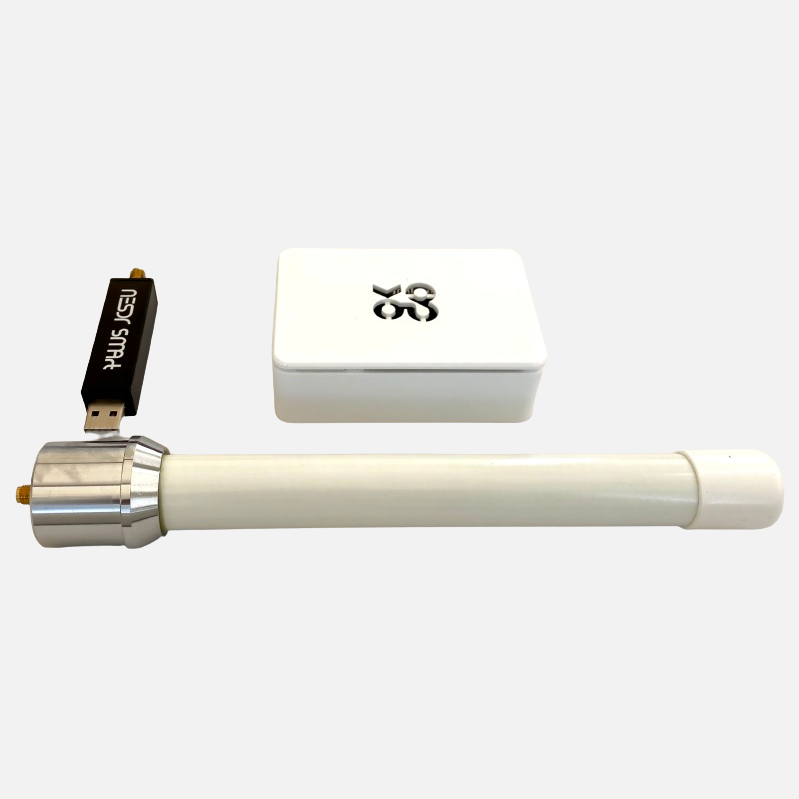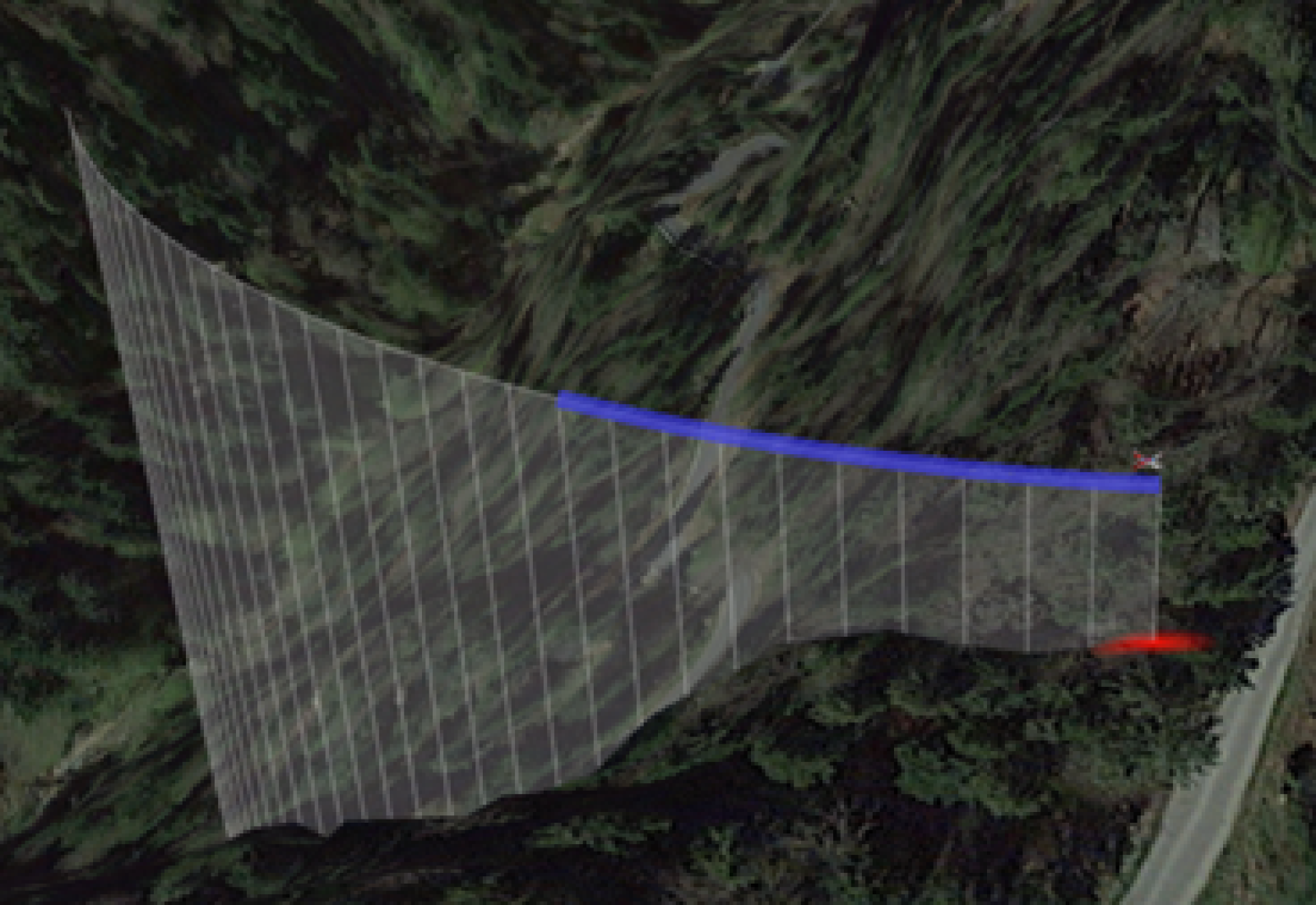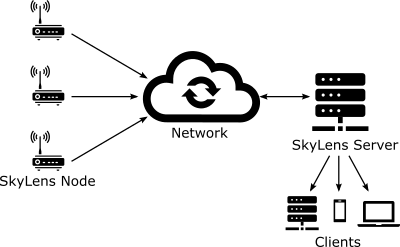Skylens Receiver Network
SkyLens ist eine Empfängernetzwerklösung für elektronische 868-MHz-Auffälligkeitssysteme wie FLARM, ADS-B und ADS-L. Es nutzt handelsübliche Hardware und sichere Kommunikation für hervorragende Leistung, Sicherheit und Skalierbarkeit zu geringen Kosten. SkyLens eignet sich für Einsätze jeder Grösse: Von lokalen Installationen mit wenigen Empfängerknoten bis hin zu grossen Netzwerken mit Hunderten von Empfängern. Die Anwendungen reichen von Situationsbewusstsein für kleine Flugplätze, Flottenmanagement und Tracking bis hin zu grossen U-Space- oder ATC-Einsätzen.


Produkt-Highlights
-
Vernetztes Mehrzweck-E-Conspicuity-Empfängersystem
-
Breitbandiger, gleichzeitiger Mehrfrequenzempfang
-
FLARM und ADS-L werden unterstützt
-
Softwaredefinierte Funkgeräte mit hoher Empfindlichkeit und Reichweite
-
Skaliert von einem einzelnen Empfänger bis zu Tausenden von Empfängern
-
Sichere Kommunikation mittels Industriestandards (MQTT, TLS)
-
Geringe Wartezeit
-
Einfache Software-Upgrades über Docker und Dpkg
-
Private oder öffentliche Netzwerke werden unterstützt
Die Architektur
Eine SkyLens-Bereitstellung besteht aus mehreren Empfängerknoten (SkyLens Node) und einem Server (SkyLens Server). Jeder Knoten verbindet sich über ein bandbreiteneffizientes Protokoll basierend auf MQTT mit dem Server. Mithilfe von TLS ist eine sichere Verschlüsselung verfügbar, einschliesslich der Authentifizierung mithilfe von Zertifikaten. SkyLens Node läuft standardmässig auf einem Raspberry Pi 4, für den ein vollständiges SD-Karten-Image verfügbar ist. Die Installation auf anderen Einplatinencomputern ist über den dpkg-Installationsmechanismus möglich.
SkyLens Server empfängt und konsolidiert den Datenstrom von verschiedenen Empfängerknoten. Da es für Flugzeuge möglich ist, mehr als ein e-Conspicuity-System zu verwenden, führt SkyLens Server die verschiedenen Datenquellen zusammen und entfernt doppelte Signale. Kunden können einfach zu analysierende JSON-Streams abonnieren, um die resultierenden Daten zu nutzen. Installation und Updates sind einfach: SkyLens Server wird als Docker-Image ausgeliefert und ist somit auf vielen Plattformen lauffähig. SaaS-/Cloud-Bereitstellungen sind ebenfalls verfügbar.
Der SkyLens-Knoten verwendet einen Prozessorkern pro e-Conspicuity-System, das er gleichzeitig empfängt. Ungenutzte Prozessorkerne können anderen Aufgaben zugewiesen werden, beispielsweise dem ADS-B 1090-Empfang (erfordert einen zusätzlichen SDR).

Spezifikationen
SkyLens-Knoten
-
Minimale HardwareRaspberry Pi 4 oder gleichwertig
-
BetriebssystemLinux
-
InstallationsmethodenSD-Karten-Image oder Dpkg
-
SDR (empfohlen)Nooelec NESDR SMArTee v2 SDR
-
Frequenzbänder868,0 .. 870,0 MHz (Europa)
902,0 .. 928,0 MHz (USA)
1090 MHz ADS-B (optional, erfordert zusätzliches SDR) -
NetzwerkEthernet oder WLAN
-
ProtokolleMQTT, NTP
-
KonfigurationTextdatei auf SD-Karte
-
SicherheitTLS, Zertifikate
SkyLens-Server
-
InstallationsmethodeDocker-Image
-
BetriebssystemLinux
-
ProtokolleMQTT: TCP oder Websocket
-
KonfigurationTextdatei auf dem Docker-Host
-
SicherheitTLS, individueller Anmeldedatensatz pro Knoten